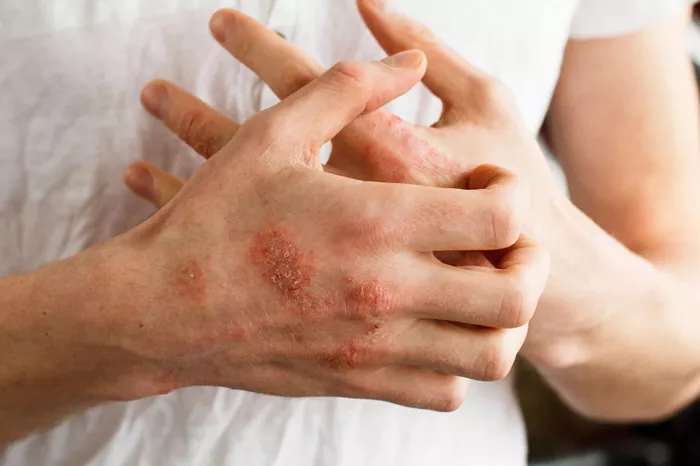Before delving into the causes of bed mites, it’s crucial to clarify the terminology. While the term “bed mites” may be commonly used, it actually refers to a different pest: dust mites. Dust mites are microscopic organisms that thrive in household dust and bedding, feeding on shed skin cells.
The true culprits behind infestations in bedding and furniture are bed bugs. Bed bugs are small, reddish-brown insects that feed on the blood of humans and animals. These nocturnal pests hide in cracks and crevices during the day and emerge at night to feed on their hosts.
Travel and Hospitality as Common Sources of Infestation
One of the most common ways bed bugs are introduced into homes is through travel and hospitality settings. Hotels, motels, and vacation rentals can serve as breeding grounds for bed bugs, as these pests hitchhike on luggage, clothing, and personal belongings. Infestations can occur when travelers unknowingly bring bed bugs home with them from infested accommodations.
Risks Associated with Used Furniture and Belongings
Another common source of bed bug infestations is the acquisition of used furniture and belongings. Second-hand items such as mattresses, sofas, and clothing may harbor bed bugs and their eggs, leading to a new infestation in the home. Thrift stores, online marketplaces, and yard sales are all potential sources of bed bug introduction if proper precautions are not taken.
Spread Between Close Living Quarters
Bed bugs are adept at spreading between close living quarters, such as apartment buildings, dormitories, and multi-unit housing complexes. These pests can move from one unit to another through shared walls, floors, and plumbing systems. Infestations in one unit can quickly spread to neighboring units, making it challenging to contain the problem without coordinated efforts among residents and property management.
Debunking Myths about Cleanliness and Visibility
Contrary to popular belief, bed bugs are not a reflection of cleanliness or hygiene. These pests are equal opportunity invaders, infesting both immaculate and cluttered environments alike. Additionally, bed bugs are skilled at hiding in cracks, crevices, and upholstery, making them difficult to detect with the naked eye. Even the cleanest homes and hotels can fall victim to bed bug infestations.
Practical Prevention Tips for Travel, Second-hand Items, Regular Inspection, and Early Intervention
Travel: When traveling, inspect hotel rooms and vacation rentals for signs of bed bugs, such as reddish-brown stains on bedding, mattress seams, and dark spots along baseboards. Use luggage racks and keep suitcases off the floor to minimize the risk of bed bug hitchhikers. Upon returning home, unpack luggage outdoors and wash clothing in hot water to kill any potential bed bugs.
Second-hand Items: Exercise caution when acquiring used furniture and belongings. Inspect items thoroughly for signs of bed bugs before bringing them into your home. Consider treating second-hand items with heat or steam to eliminate any hidden bed bug infestations before use.
Regular Inspection: Conduct regular inspections of bedding, furniture, and other potential hiding places for bed bugs. Look for signs of infestation, such as live bugs, shed exoskeletons, eggs, and fecal stains. Early detection is key to preventing widespread infestations and minimizing the need for costly extermination services.
Early Intervention: If you suspect a bed bug infestation, take prompt action to address the problem. Contact a licensed pest control professional for thorough inspection and treatment. Avoid attempting to eradicate bed bugs on your own, as DIY methods are often ineffective and can exacerbate the infestation.
Additional Resources for Information and Support
For individuals seeking more information and support regarding bed bug infestations, several resources are available:
National Pesticide Information Center (NPIC): Provides information on pesticide use and safety, including guidance on bed bug control.
Environmental Protection Agency (EPA): Offers resources on bed bug prevention and control, as well as information on registered insecticides for bed bug treatment.
Local health departments: Many local health departments offer guidance and assistance for dealing with bed bug infestations, including information on local regulations and resources for pest control services.
In conclusion, understanding the causes of bed bug infestations is essential for preventing and addressing these pesky pests. By recognizing common sources of infestation, debunking myths about cleanliness and visibility, and implementing practical prevention tips, individuals can reduce the risk of bed bug encounters in their homes and travels. Early detection, regular inspection, and prompt intervention are key to minimizing the impact of bed bugs and maintaining a pest-free environment.
[inline_related_posts title=”You Might Be Interested In” title_align=”left” style=”list” number=”6″ align=”none” ids=”6905,6902,6908″ by=”categories” orderby=”rand” order=”DESC” hide_thumb=”no” thumb_right=”no” views=”no” date=”yes” grid_columns=”2″ post_type=”” tax=””]






























